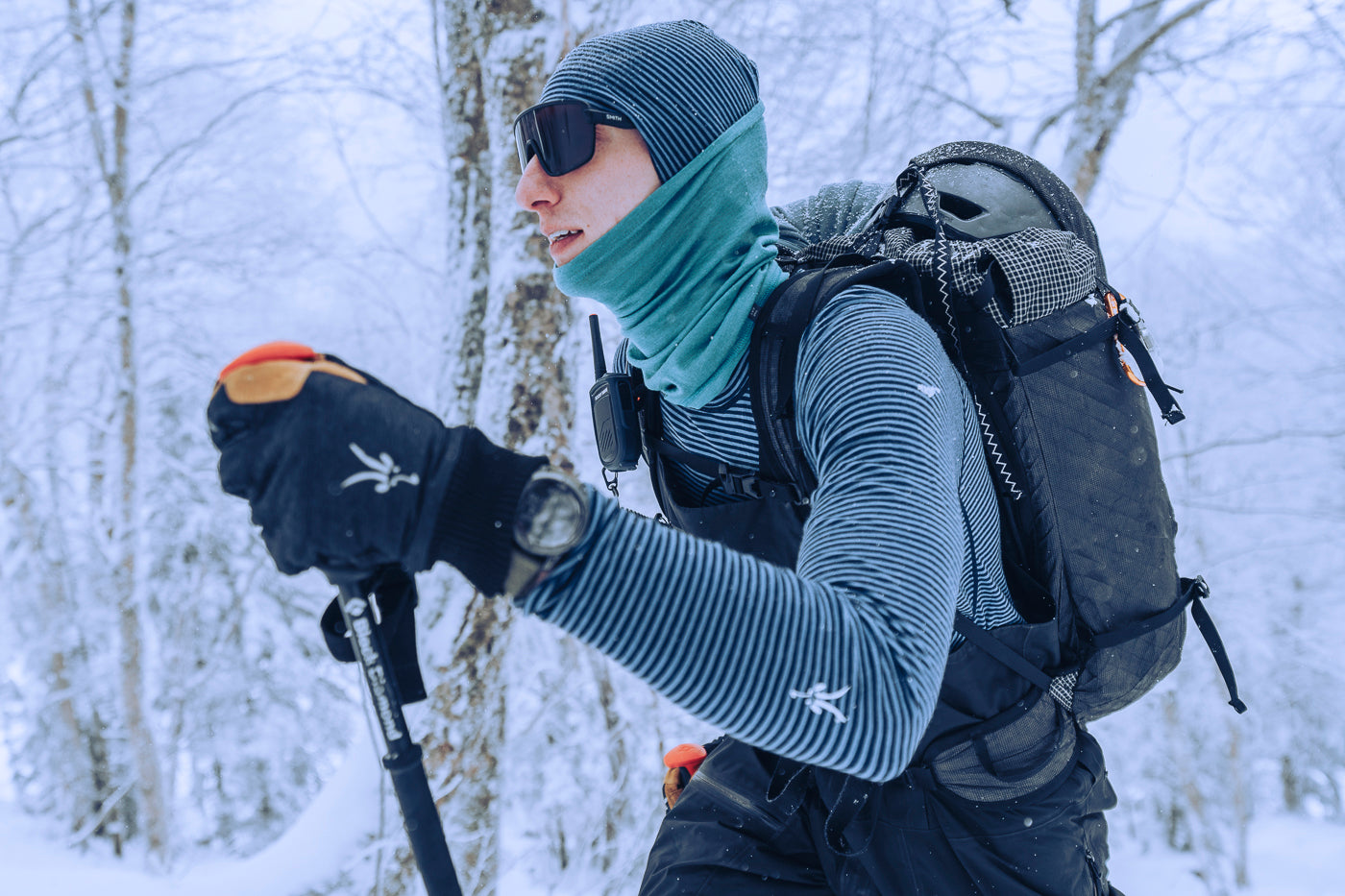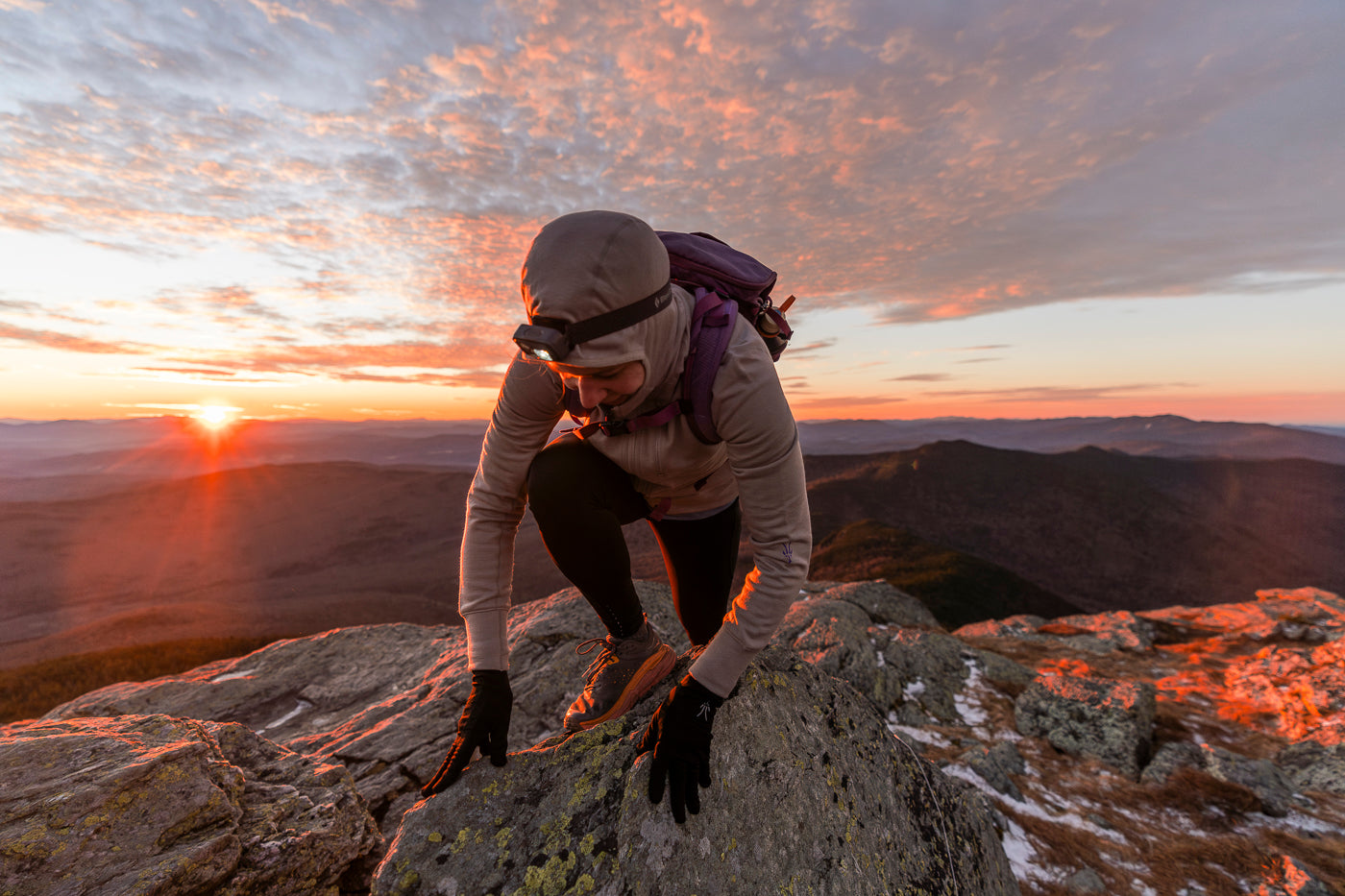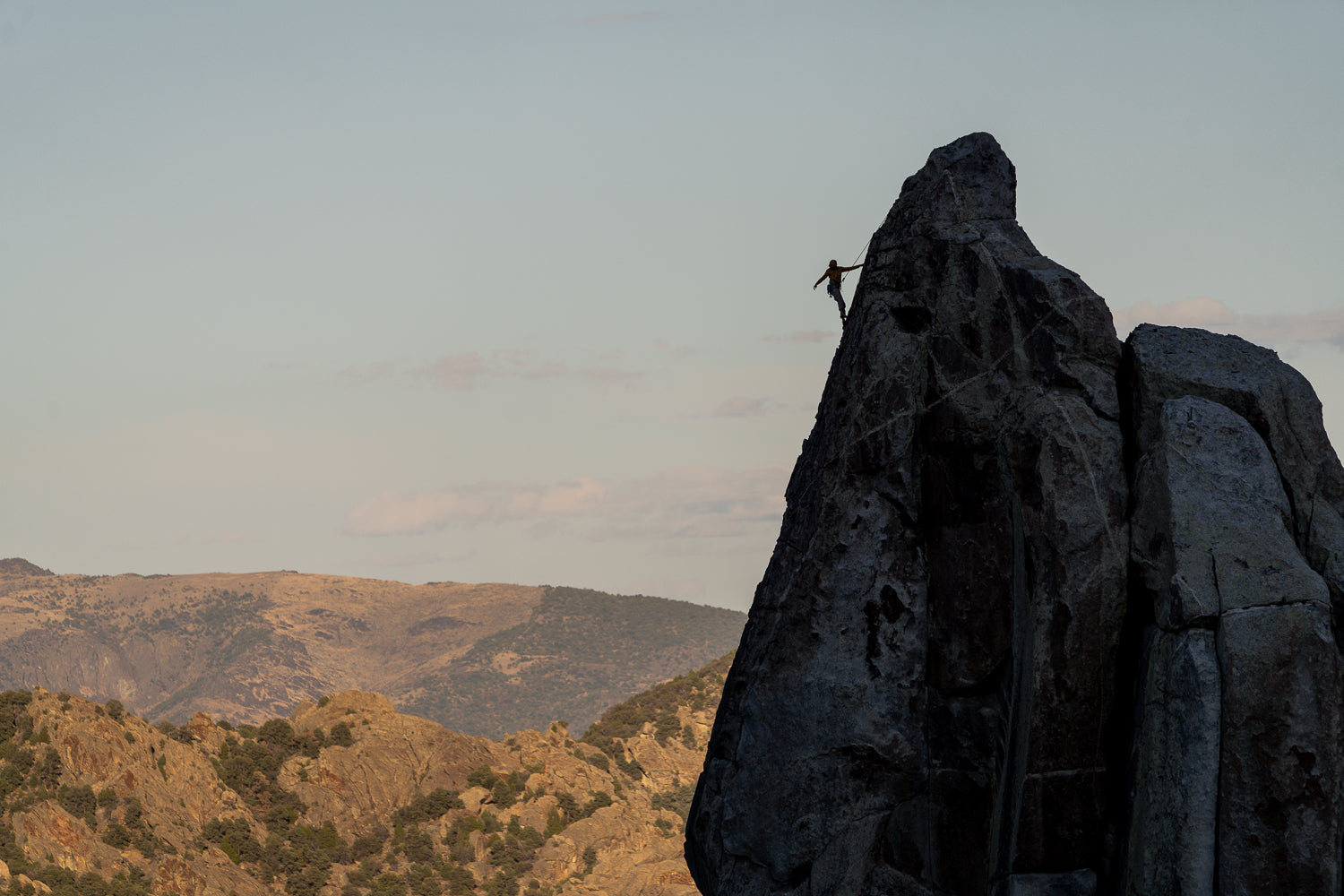Endurance, Grit, and 150 Miles on Foot
Q&A about the Iditarod Trail Invitational
with Ibex Ambassador, Carol Seppilu
NELSON BROWN 〡 March 18th, 2025
Endurance, Grit, and 150 Miles on Foot:
From the icy coast of Nome to the rugged spine of the Iditarod Trail, Carol Seppilu has been running toward something bigger than finish lines. A Siberian Yupik ultrarunner and mental health advocate, Carol’s path into endurance racing wasn’t born out of podium dreams—but out of a fight for her own life. What began with a two-mile run and a neighbor calling out, “Hi jogger!” has become a story of radical transformation, resilience, and reconnection—with her mind and body, with the land, and with the strength of her ancestors. This year, she laced up for 150 brutal miles on foot in the Iditarod Trail Invitational. We caught up with Carol to hear how she got here—and where she’s headed next.


Q: What first inspired you to start running, and when did you realize it was something you truly loved?
A: I loved running when I was younger and was very competitive. I’d race my cousins in the backyard of our grandparents’ house in Savoonga. Later in life, I didn’t do much of it. A friend was running marathons in different states, and it inspired me.
In 2014, I was very obese and depressed, and was in bed for 20 hours a day. Then one day, I woke up at noon—it was a beautiful summer day. I thought to myself, I need to get up and do something. Go for a 2-mile run, how hard can that be? I laced up my shoes, grabbed my dog, and ran down the street. My neighbor said, “Hi jogger!” I was dying, out of breath, but managed to say hi back. It was much harder than I thought it’d be! So I made it a goal to walk the rest of the way and try again the next day. I did that almost every day for a whole year and finally ran the entire 2 miles without a walking break. It made me happy.
I entered an 8-mile race and finished in last place. That’s when I became hooked on racing.
The same friend signed up for a 100-mile race in 2016. I was shocked—I had no idea people ran that far. I followed her and signed up for the shorter 20-mile race; it was a loop course. Watching them endure each 20-mile loop inspired me so much. I decided that someday I’d run 100 miles too.Over the years, I’ve gone to many races across the U.S., mostly mountain races, because I fell in love with trails and the solitude of the mountains.
Q: What drew you to take on the ITI? Was this race always on your bucket list?
A: I’ve always been an Iditarod fan. When I was younger, I dreamed of racing as a musher. So when I learned about the ITI, I was immediately drawn to it. I knew then that someday I’d work my way toward it.
Q: Was there a particular moment or race that made you feel like an ultrarunner for the first time?
A: Training for a race is sometimes hard in Nome with the weather being so harsh in winter. One day I was scheduled for a long run and had to do it indoors because of a storm. I ran loops in the gym for six and a half hours and completed a 31-mile run. I remember feeling accomplished—like a real ultrarunner. I think that helped make me mentally strong too, because running loops for that long is not easy!
Q: What role does the landscape of Alaska play in your love for running?
A: It’s so beautiful out there. I feel very connected to our lands here at home—the plants, the mountains, the wild animals, the air, the sea. It’s all I’ve ever known. It just feels like home, and I feel comfortable in it. Being out there running makes me happy. I also love that it’s the land our ancestors have run on since time immemorial.
Q: Any unexpected wildlife encounters or moments of pure wilderness magic on the trail?
A: I’ve run into or come close to bears, muskox, a wolf, wolverine, lynx, foxes, moose, and caribou. I think the most pure encounter was during a 76-mile trek to Serpentine. A caribou came close to me—it seemed like he was making sure I was okay. He waved his head around as if to say, “Keep going,” and then took off. It was the encouragement I needed, as I was completely exhausted. It was beautiful.
Q: What piece of gear (besides Ibex, of course) was absolutely essential for this race?
A: I was really glad I had my Ibex Wool Aire Hoodie. I put it on after mile 70 and kept taking it off and putting it back on, but I finished the race wearing it. I was also thankful for my spikes—it was so icy. A good sleeping bag and bivy kept me warm when I had to rest for a few hours. I also had to melt snow once, so my stove was essential.
Q: What’s your mindset when you're deep in the miles, battling fatigue and the elements?
A: It can be difficult, and sometimes you forget why you’re doing it. I remind myself it’s not always going to feel that way. The night I struggled the most was followed by a beautiful morning that revealed the mountains as I came into Finger Lake. I was in awe. Those are the moments I keep going for—the things I see because I didn’t stop.
Q: What was your biggest challenge—cold, fatigue, sleep deprivation, something else?
A: My biggest challenge is sleep. I need to work on sleeping when I’m racing multi-day events. I’ll definitely practice that more for the ITI 350.
Q: How do you manage sleep and recovery during such a long event? Did you have a strategy for resting?
A: I tried to sleep, but it was difficult. I think the few stops I made helped my feet feel better—I had them elevated as much as possible. I used compression sleeves for my calves, and they helped me recover faster. I also ate pretty healthy, using my ancestors’ fuel—Akutaq, which is reindeer fat, oil, mixed with ice, tundra berries, and a little sugar. I made my own energy balls too. It was all high-calorie, good food for my body, and I was able to recover well. My body doesn’t do well with too much sugar.
Q: What’s next? Any big adventures or races on the horizon?
A: I’d like to go back to Resurrection Pass and get my second 100-miler there. I love that trail—it’s one of my favorites. I’ve done two 50-milers and one 100-miler there. I’m also planning to enter the ITI 350 next year. I’ll spend this year adventuring in the mountains and doing hard things to prepare for it.
MORE PHotos:
Carol's ITI running Kit:











